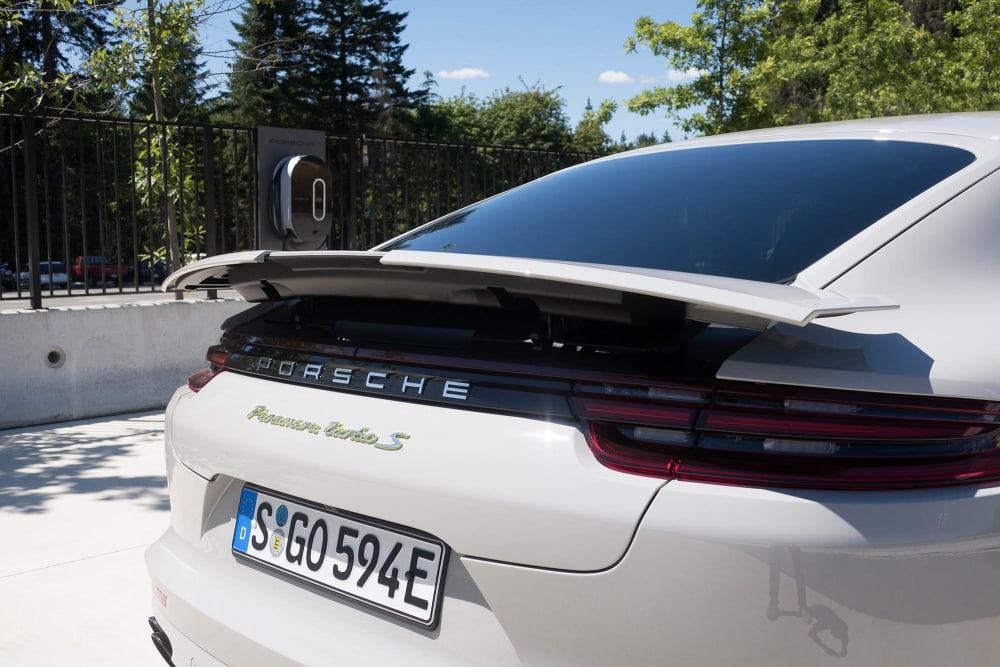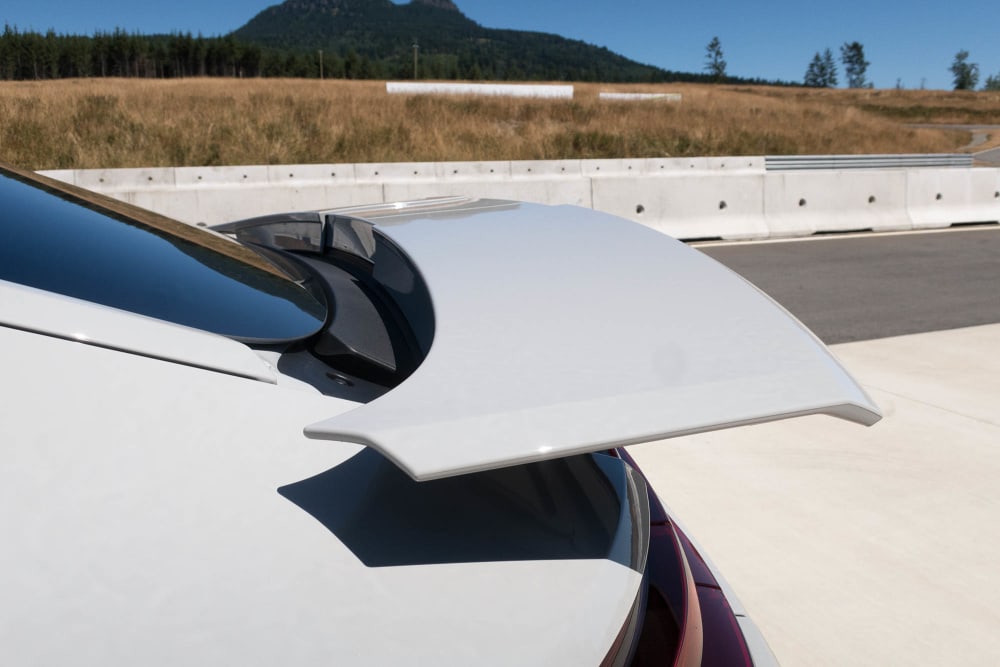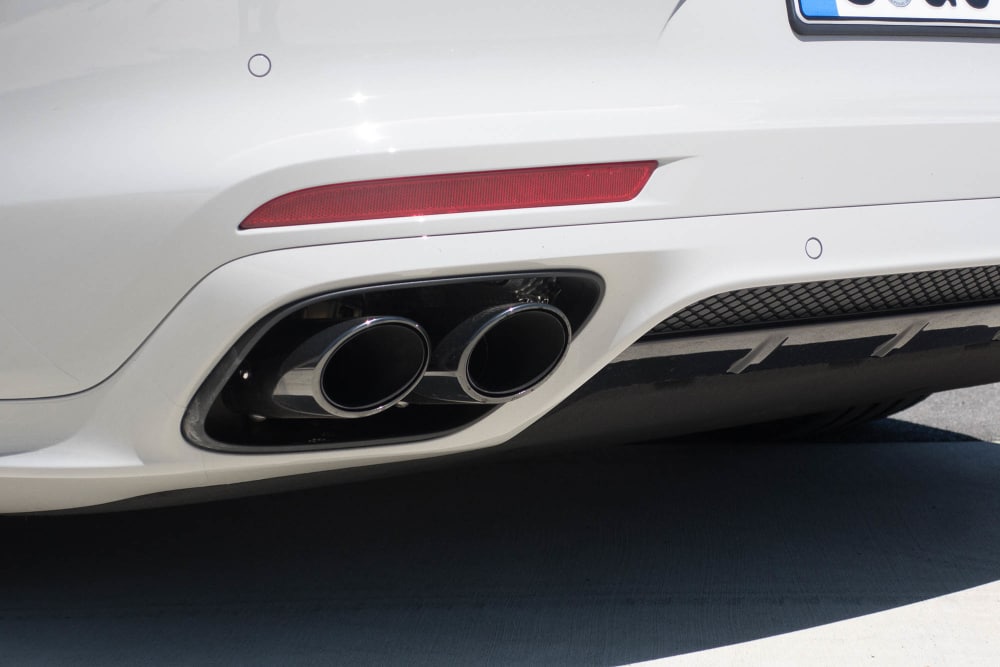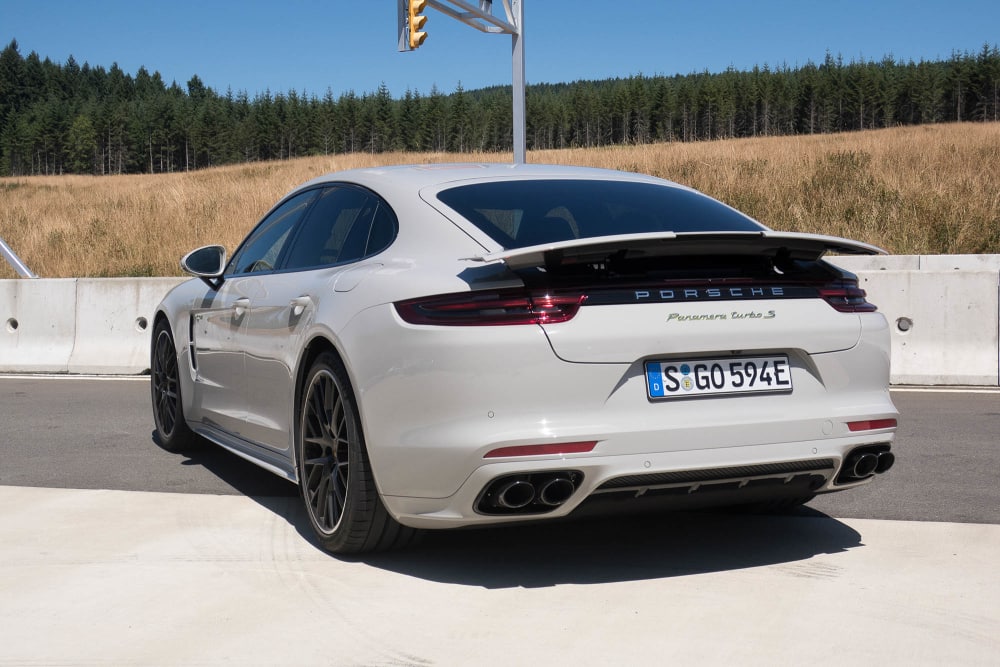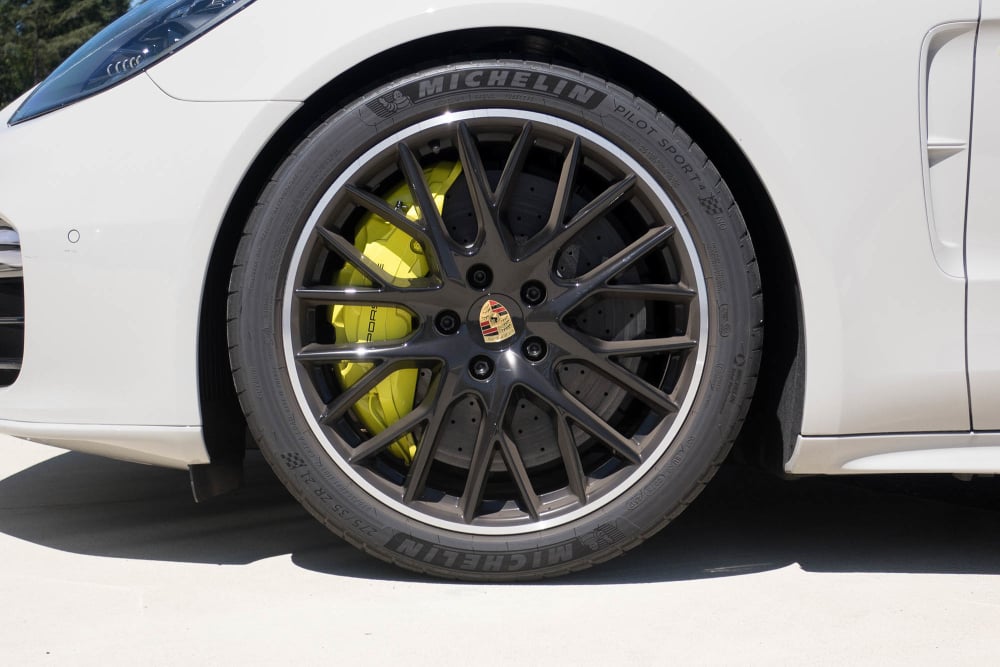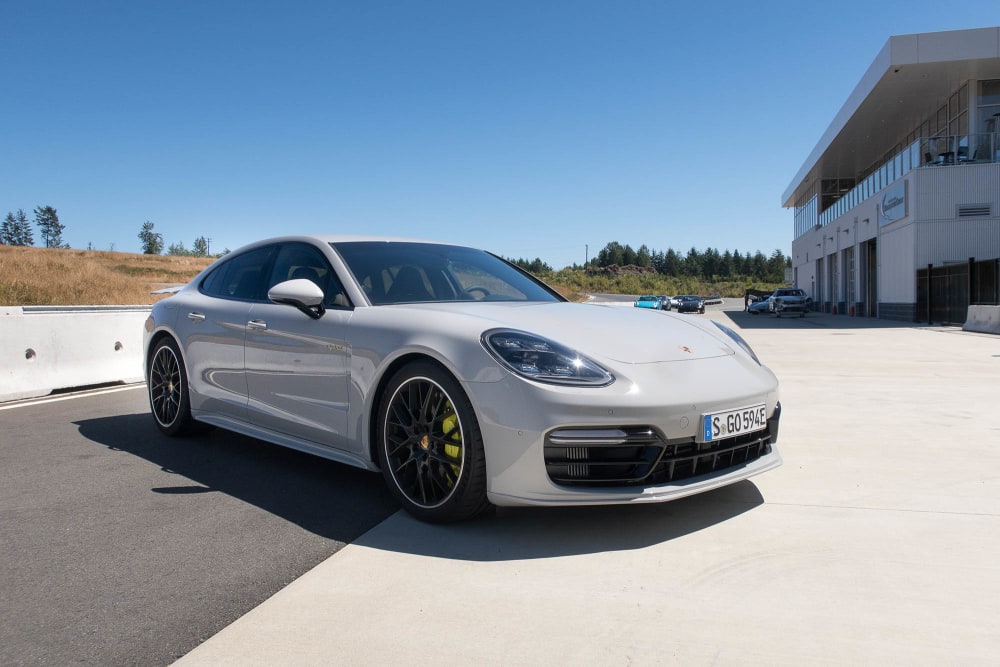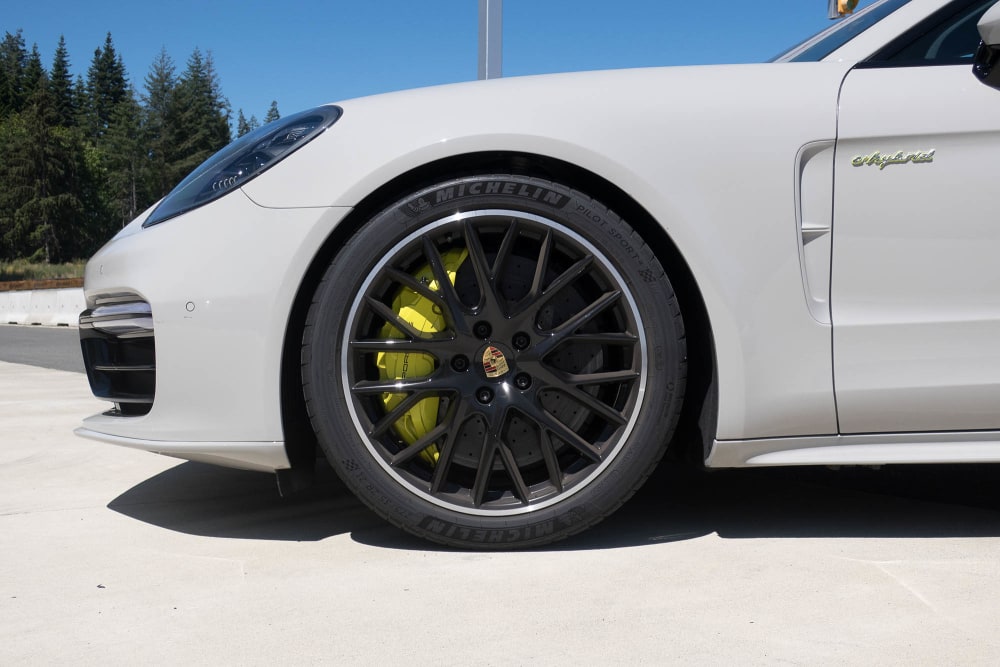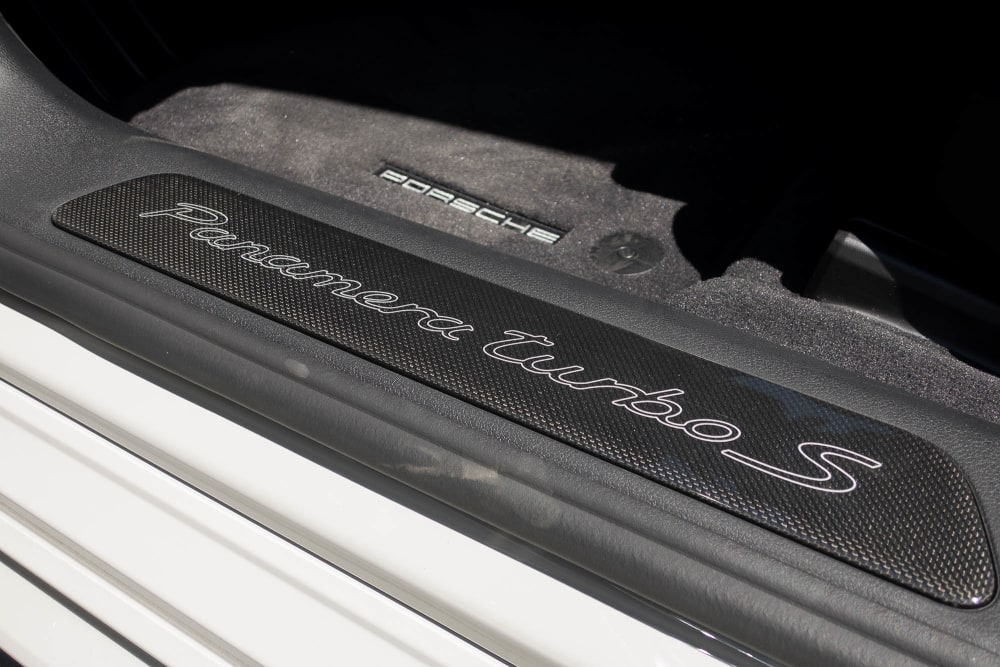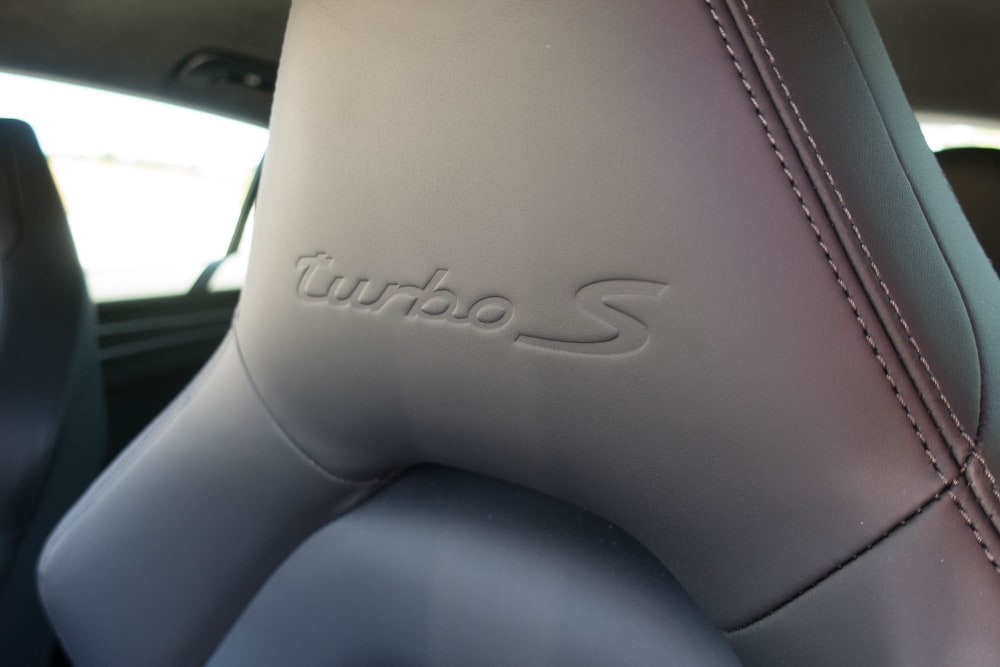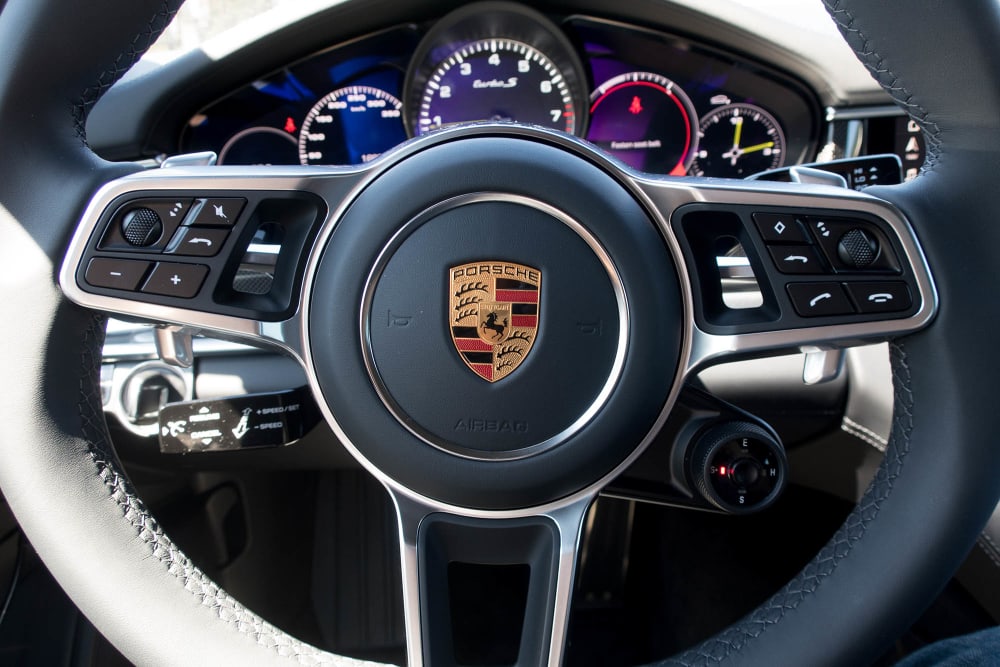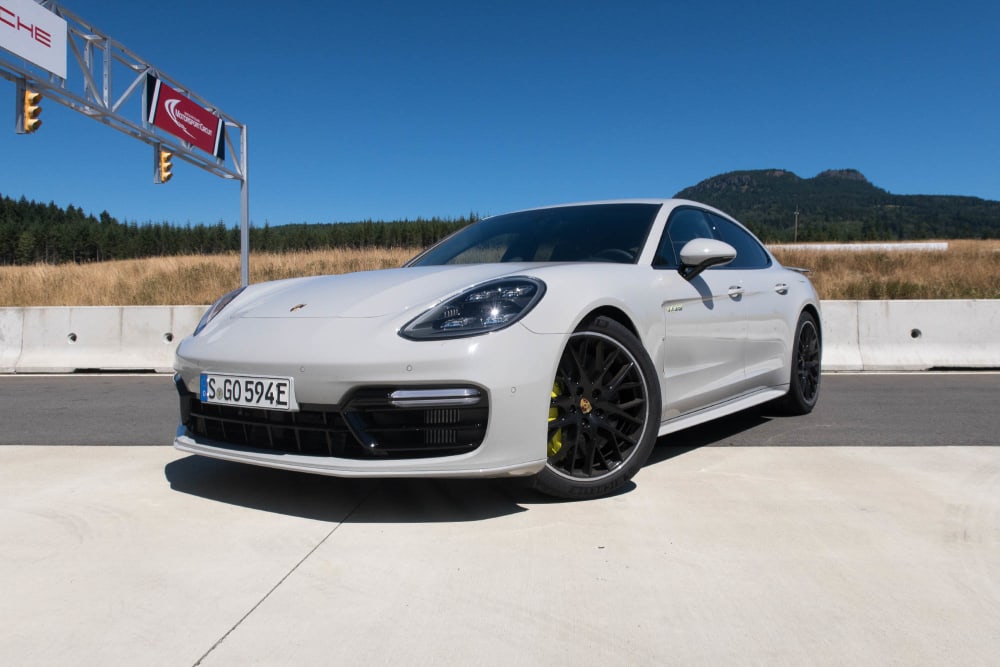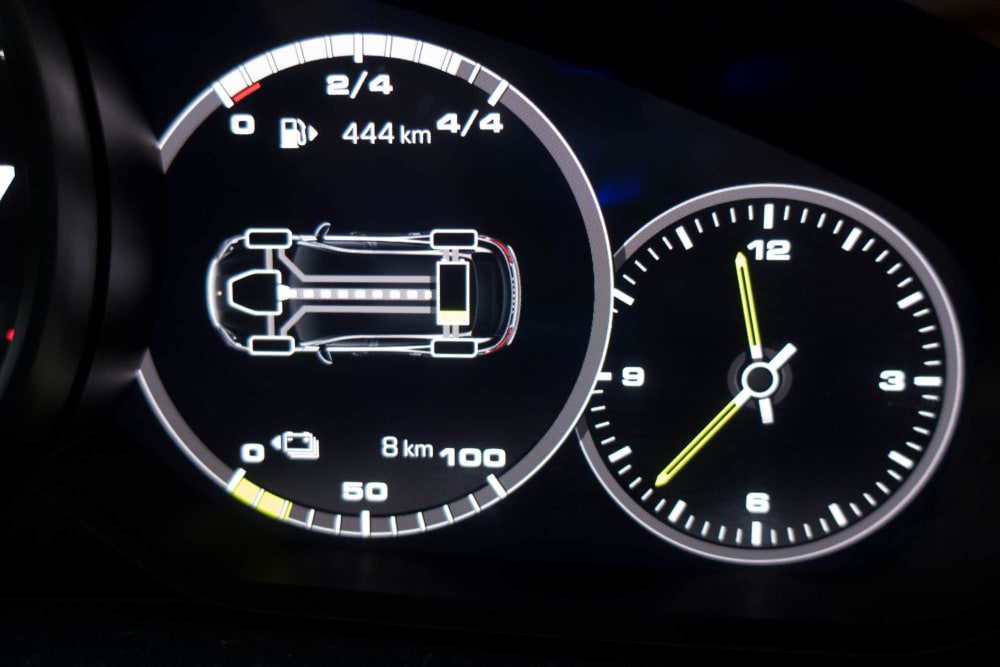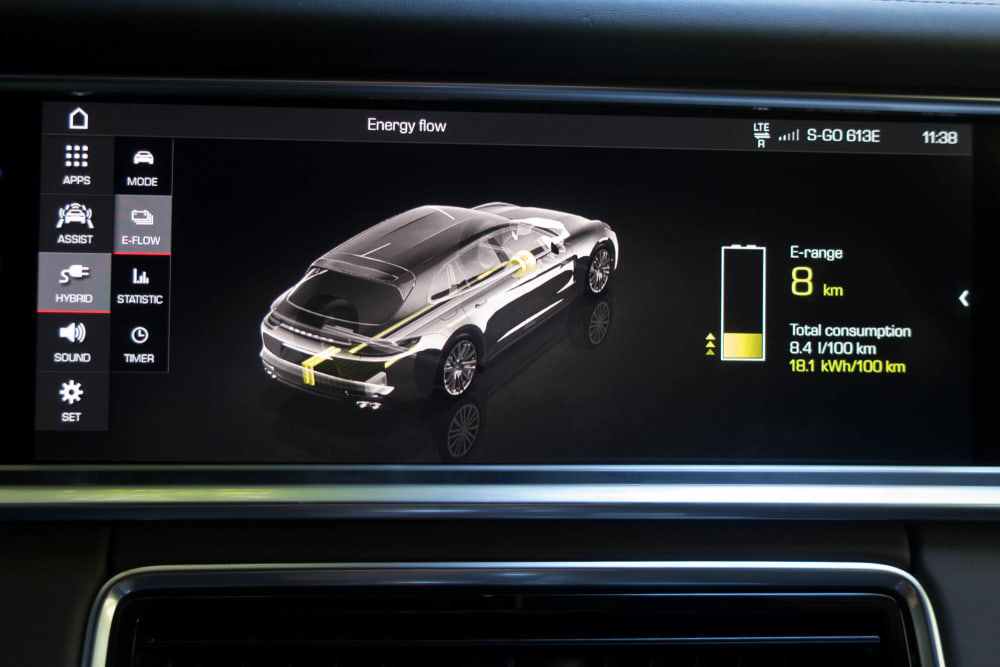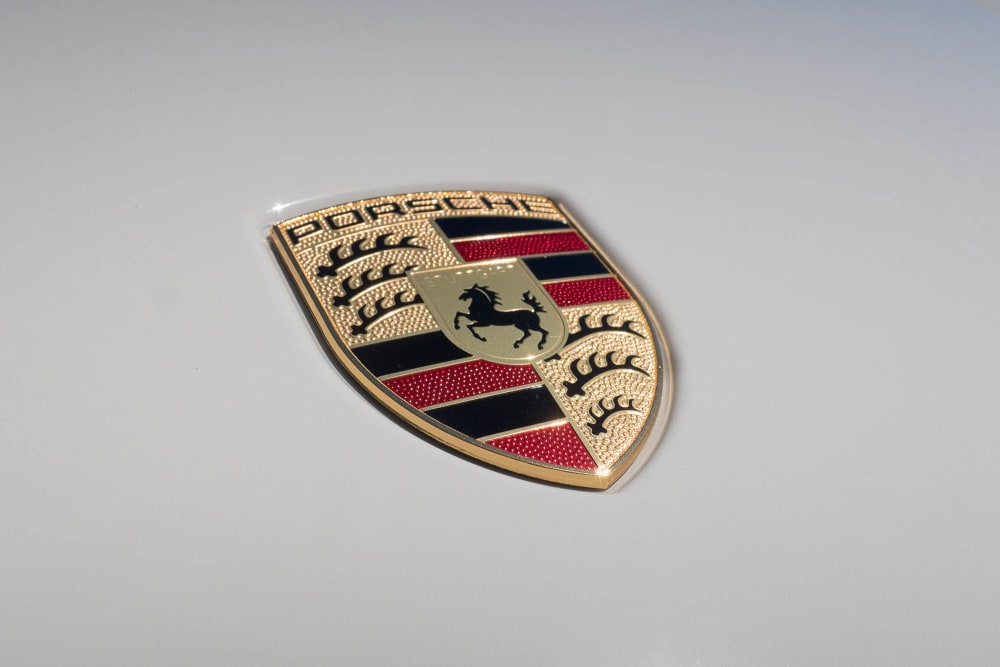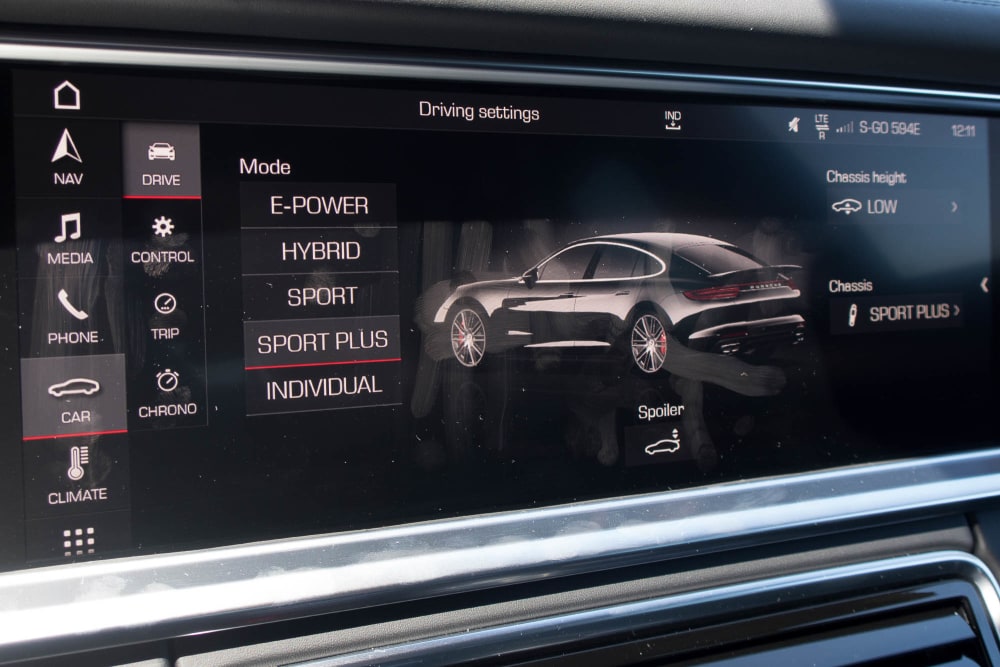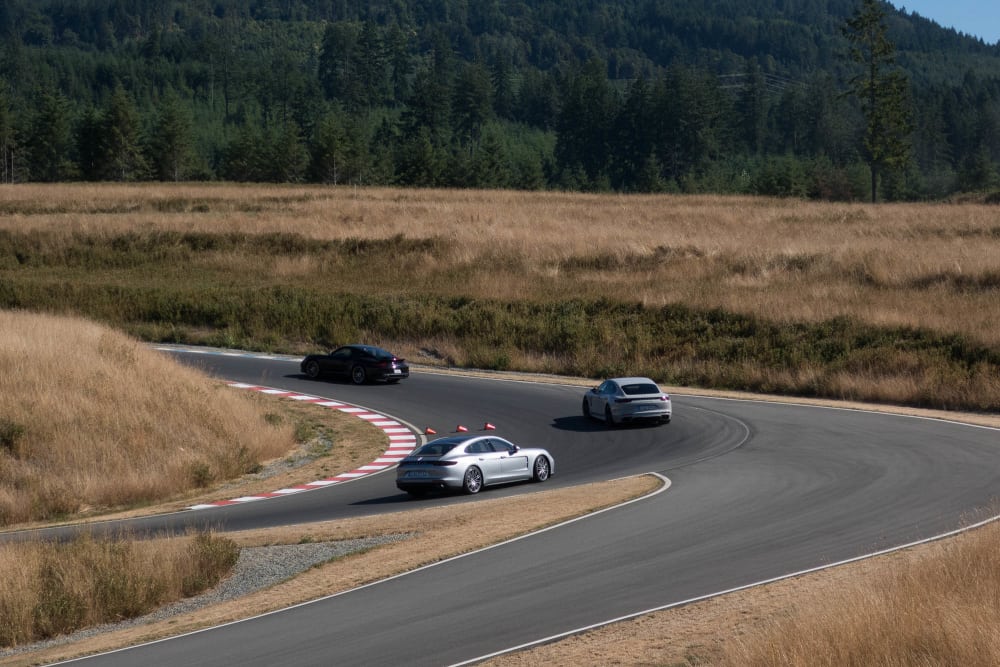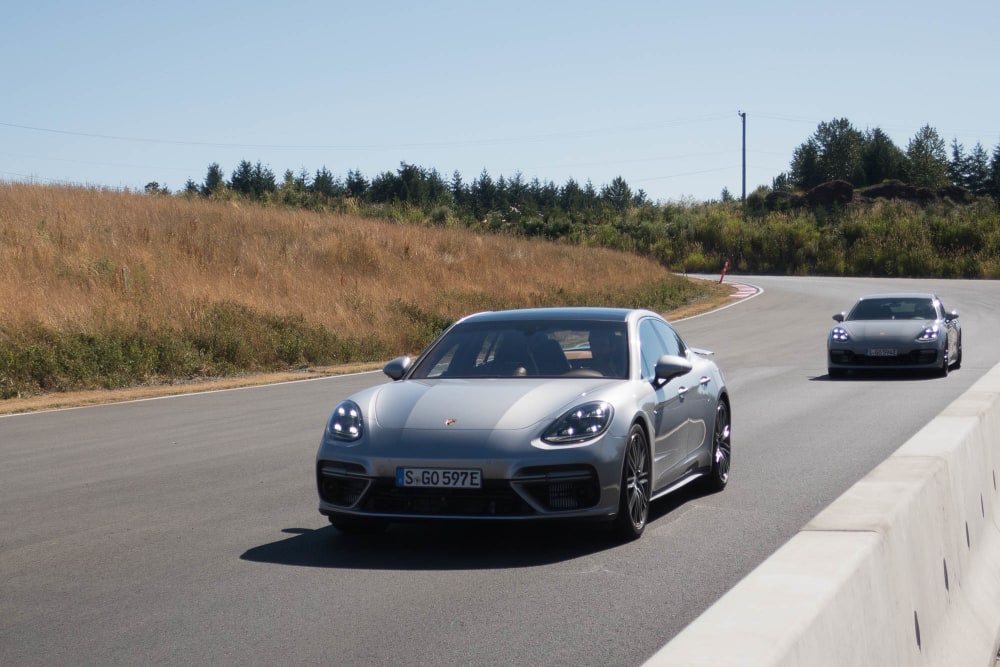CARS.COM — Technology moves fast these days, and there are positive connotations. Leaps forward in technology allow us to do more, be more efficient and have more fun — mostly. But it doesn't all feel that way. This was the fear I had with the 2018 Porsche Panamera Turbo S E-Hybrid.
Related: 2018 Porsche Panamera Sport Turismo Review: First Drive
At its core, the Panamera Turbo S E-Hybrid is a performance car, but it achieves this aim with a lot of technology; a whole layer of it stands between the driver and the road. We've driven technological marvels that are fast but feel artificial. How about the Panamera Turbo S E-Hybrid? I got acquainted with it on both road and track at the Vancouver Island Motorsport Circuit.
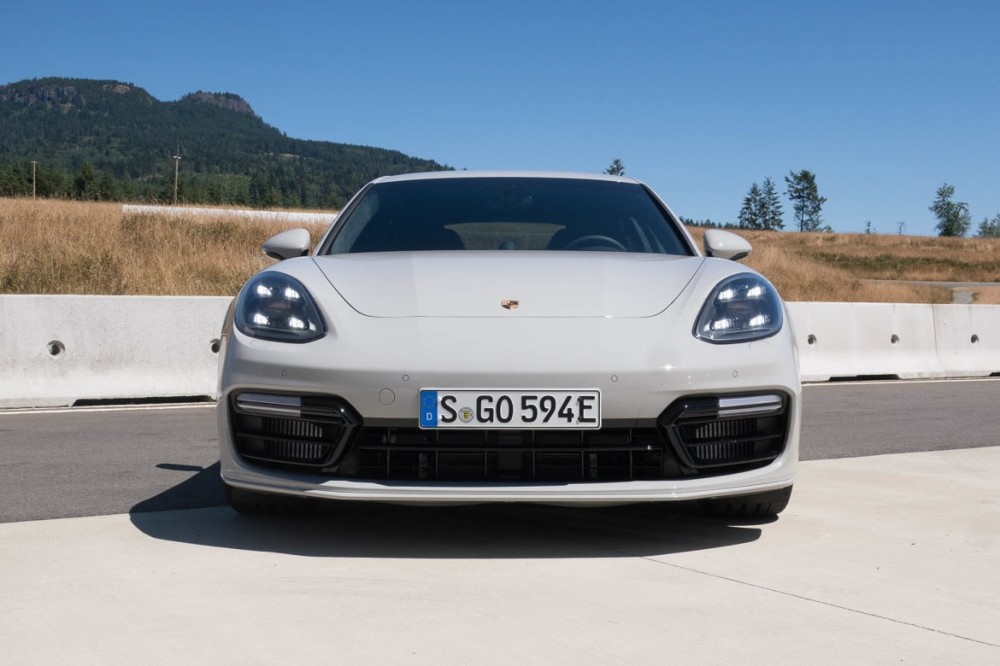
Powertrain
The Turbo S has traditionally been the fastest variant of Porsche's various models before getting into the track-performance or special-edition vehicles like the 911 GT3. The 911 Turbo S is the fastest of the "normal" 911s and the Panamera Turbo S is the fastest Panamera.
For the new Panamera, which was fully redesigned for 2017, Porsche has chosen to go in a different direction with the return of a new Turbo S: electrification. That's why it's added the "E-Hybrid" modifier at the end of its name. It's the epitome of Porsche's hybrid philosophy: Yes, add efficiency, but add go-go power as well.
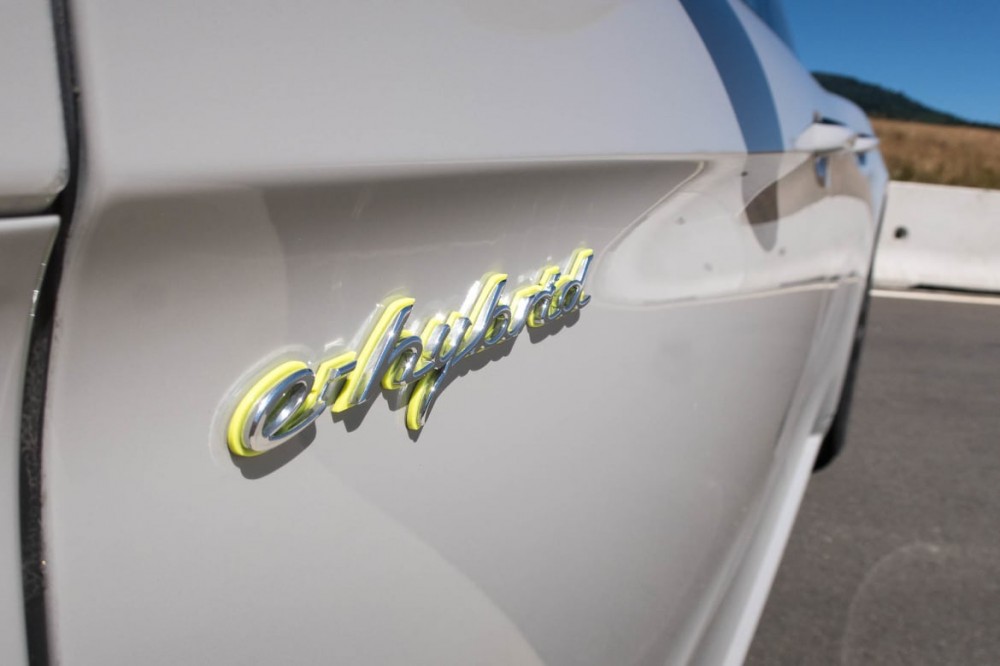
The hybrid powertrain is one of two the Panamera offers, the lesser of which employs a V-6 gas engine I covered in my First Drive of the 2018 Panamera Sport Turismo. The Turbo S E-Hybrid's gas engine is pretty bananas even without electric assistance, a 550-horsepower, twin-turbo 4.0-liter V-8 that makes 567 pounds-feet of torque. The electric motor, powered by a lithium-ion battery pack with 14.1 kilowatt-hours of capacity, makes another 136 hp and 295 pounds-feet of torque. Porsche does cap total system output at (only) 680 hp and 626 pounds-feet of torque, though. It's frustrating (it isn't).
The Panamera Turbo S E-Hybrid has only one transmission option, but it's a good one: an eight-speed PDK (dual-clutch) automatic with paddle shifters. The previous generation of the Panamera had strange paddles — actually push-pull buttons mounted on the spokes of the wheel that you pushed forward with your thumbs to upshift and pulled back with your other fingers to downshift. It wasn't an intuitive system, so we are thankful to see the new car go to regular paddles. All-wheel drive is also standard.
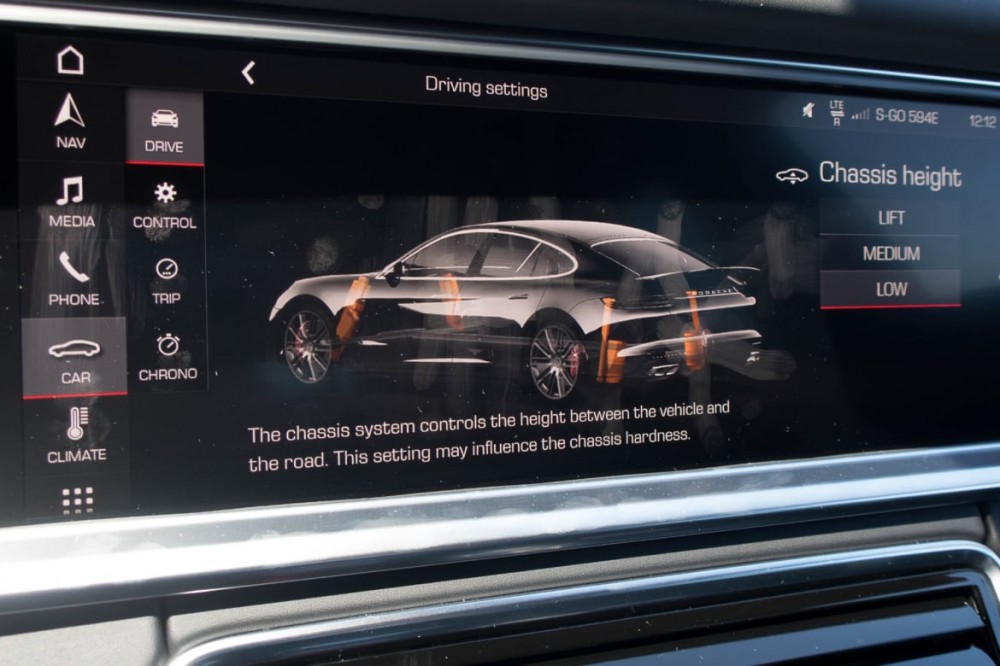
Suspension
The Panamera Turbo E-Hybrid also doesn't skimp when it comes to its suspension, where it gets a whole bowl of alphabet soup's worth of acronyms and technologies. An air suspension with three adjustable ride heights and Porsche Active Suspension Management are standard. PASM is an electronic damping control system that adjusts the firmness of each shock absorber to help keep the car flatter during cornering in more aggressive driving modes or keep it more pliant at other times.
Also standard is Porsche Dynamic Chassis Control Sport, which includes Porsche Torque Vectoring Plus. (Porsche loves repeating its name at the front of all of these feature names.) The PTV Plus system has an electronically controlled locking rear differential, which allows the car to transfer torque between the left and right wheels. There is torque vectoring for the front axle, as well. The only option missing from my test vehicle was rear-wheel steering, which is a new option for 2018.
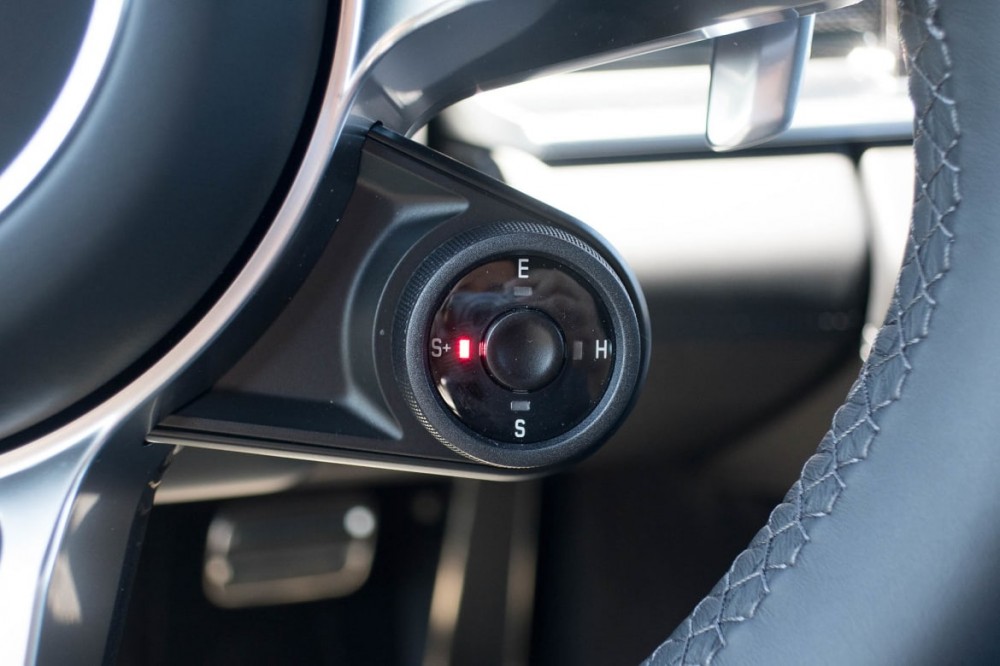
On the Road
My first drive leg was on the road, so I did not get a chance to see immediately how all of these technologies affect performance. However, climbing into the Turbo S E-Hybrid at the beginning of the day gave me the advantage of testing it out with a full battery, and that meant all 31 miles of electric range were available to use up. And I did use most of it. The Panamera Turbo S E-Hybrid can go up to 86 mph on battery power alone, and it does so pretty quickly. Push the pedal down past a small dÈtente that Porsche has incorporated into the accelerator travel (which is variable and moves around depending on driving mode) and the gas engine will kick on, but I was able to get to highway speeds without babying the throttle.
There are four drive modes available for the Panamera Turbo S E-Hybrid, which can be chosen via a dial on the steering wheel or through the media screen: E-Power, Hybrid, Sport and Sport Plus. E-Power locks the Panamera into electric mode as much as possible to use all of that juice up. Hybrid is actually the most efficient mode overall; the computer decides how best to use the gas engine and electric motors for the speed and conditions. Within the Hybrid driving mode are two other options: E-Hold, which keeps a consistent level of battery charge (if you want to save some for an upcoming stretch of city driving, for example), and E-Charge, which turns the gas engine on to help charge the battery more quickly.
The final two modes are Sport and Sport Plus, both of which keep the gas engine on at all times. In Sport, the battery is kept above a minimum charge level to ensure that some electric boost is available when needed.
We saved Sport Plus for the track.
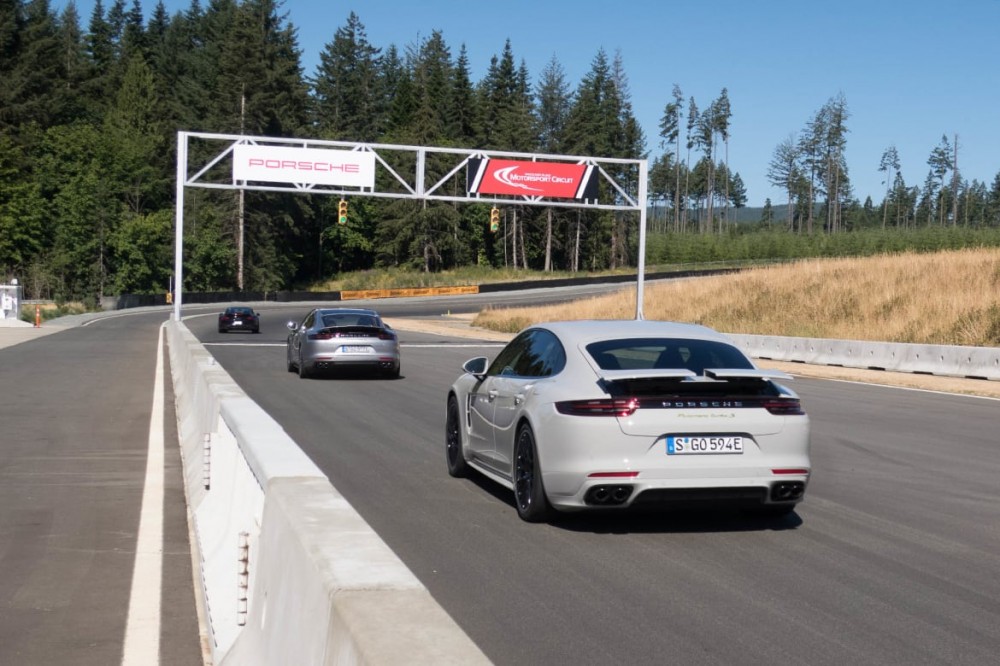
On the Track
Sport Plus not only keeps the gas engine on all the time, it also uses it to charge the battery at its maximum rate in order to get as much power into the battery as possible to aid performance. This mode is a fuel-economy crusher, but that was the least of my concerns as we headed onto the track.
The course at VIMC is a very tight, technical track with lots of elevation changes. I was glad to be doing lead-follow because there were a couple of blind crests that charge into quick chicanes spread throughout.
It's more of an ideal setting to test out one of Porsche's mid-engine offerings like the Boxster or Cayman[MP7], where their handling and dexterity would get to shine — not the place to test out a 5,093-pound sedan, no matter how powerful that engine is.
The straights aren't very long, so I didn't get anywhere near the Panamera Turbo S E-Hybrid's top track speed of 192 mph — but I can vouch for its zero-to-60-mph time of 3.2 seconds. The acceleration is sudden and seamless. I can't really say if the engine has much turbo lag, and it proved irrelevant; the kick from the electric motors covers up any that would be present, and when you put your foot down, the car responds instantaneously.
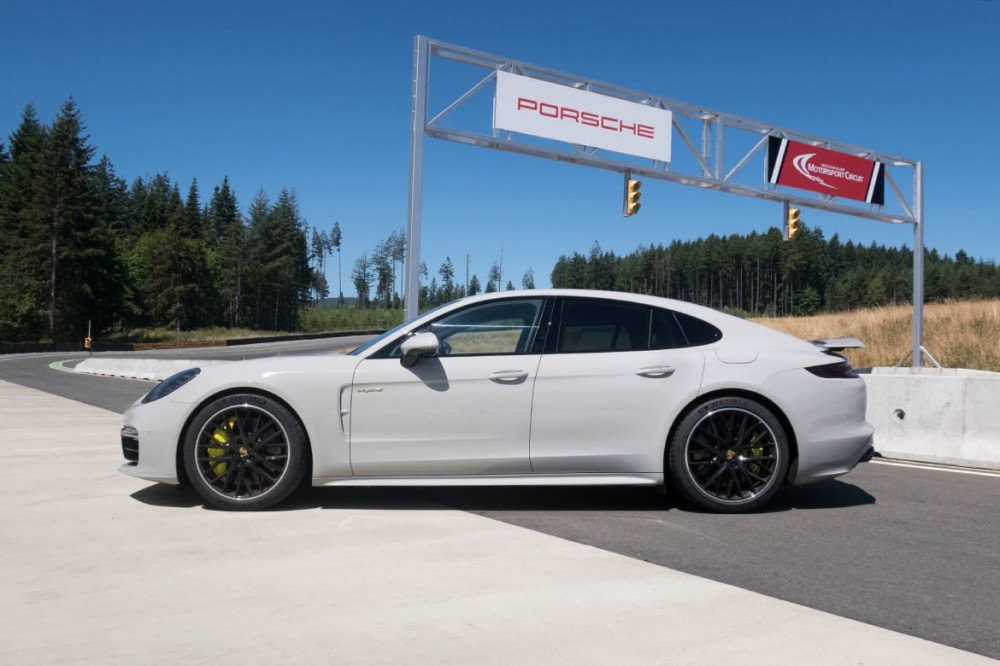
I have a healthy skepticism of all of the layers of electronics between the driver and the wheels on a racetrack where feeling is paramount. What's strange about the aids in the Panamera Turbo S E-Hybrid is that they not only make you safer around a track, they make you better. Coming out of the straight was a long, sweeping right-hand curve that suddenly turns into a much sharper right. The Panamera Turbo S E-Hybrid, for all of its positives, is a big, heavy car. I got on the brakes a hair late going into the turn and I could feel all of that weight shift and start to hunker down on the back rear tire. But just as the car started to squat, it all of a sudden … didn't. PASM stiffened up that shock to keep the car flat, the torque vectoring shifted the power around and voila, I was through and on to the next corner with no drama. It was seamless and, in a way, serene. Next thing I knew I was back on the power and the car was humming along to the next corner.
Driving the car hard is uncanny, as you can feel all of these systems working underneath you in real time. But you still have enough feel through the steering and the suspension to give confidence to the driver. There isn't any floatiness, and the electric power steering also offers a hefty amount of feedback that helps to communicate the amount of grip in the tires (which is a lot). The technology layer is there to help you stay safe and quick but doesn't overly mute the sensation of speed inside.
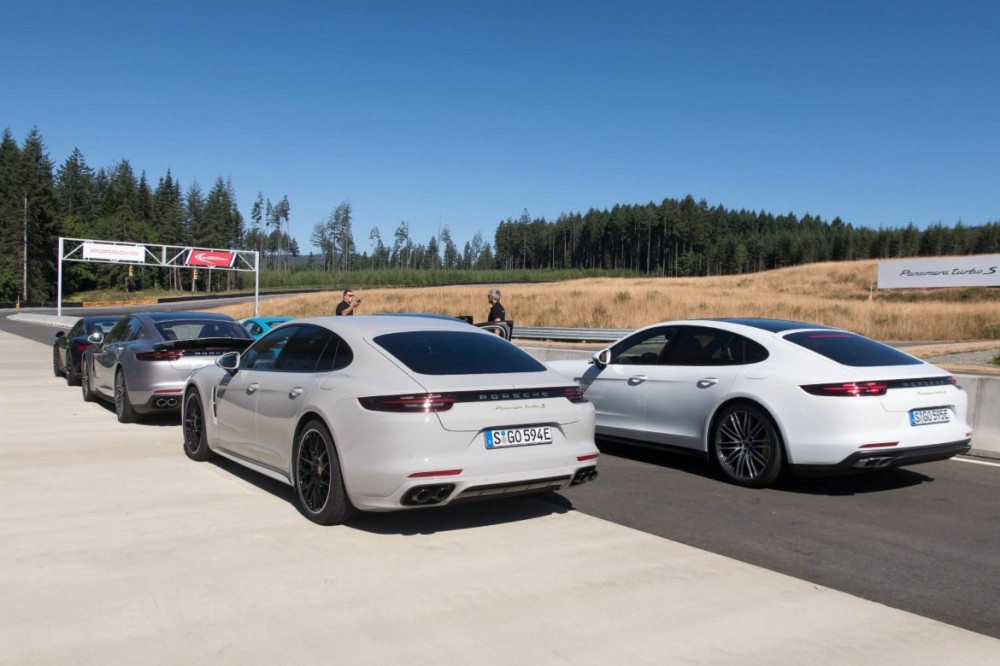
Jack of All Trades
The Panamera Turbo S E-Hybrid is fast, agile for its size and a blast to drive on the street or on the track. It doesn't have the performance ceiling that you'd find in Porsche's other sports cars, such as the 911 or even the Boxster/Cayman duo. Those cars have handling prowess and balance that the heavy E-Hybrid just can't match.
But how the Panamera Turbo S E-Hybrid can excel is as a more versatile alternative to those vehicles. You can have a lot of fun and still seat four occupants in comfort as well as have a trunk that fits actual things. Of course, none of this comes cheap; the sticker price for my test vehicle was a cool $216,430 (including a $1,050 destination charge).
The 2018 Panamera Turbo S E-Hybrid is an example of technology working right. The suspension and chassis components gave me added confidence on the track, while the hybrid powertrain boosts both efficiency and performance. It's a worthy car to sit at the top of the Panamera lineup.
